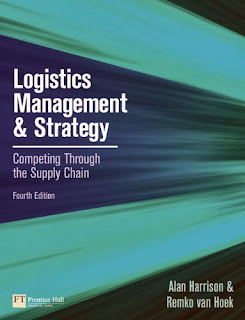Review
“I have attended over 500 board meetings of Fortune 100 companies and I wish I had read this book before I went to the first one! It is excellent.” —Norm Augustine, retired Chairman and CEO, Lockheed Martin
“This book is a must-read for any CEO or board member that wants to create a high-performing board” —Steve Bennett, former CEO, Intuit and board member QUALCOMM, Symantec
“Beverly Behan has made a compelling argument for getting better value from many public companies’ most under-used asset—the board of directors—and has given us an accessible, practical guide to making it happen.” —Nell Minow, Co-Founder, The Corporate Library
“I’ve probably served on more than 50 boards over the last dozen years and was amazed to discover so many ‘new’ ideas in this book. A must-read for directors and perhaps more importantly, new CEOs.” —Frank McKenna, Deputy Chairman, TD Bank Group and former Canadian Ambassador to the United States
“Should be mandatory for C-level executives, a threshold requirement for anyone likely to be elected CEO and a vehicle for all CEOs and directors to study and discuss in order to make the board and themselves more effective.” —Warren Batts, 2006 NACD Director of the Year, retired CEO of four companies, and Adjunct Professor, University of Chicago Business School
“While Great Companies Deserve Great Boards is a useful primer for first-time CEOs and board members, the book also provides helpful reminders for those more experienced in the boardroom.” —Arthur D. Collins, Jr., retired Chairman and CEO, Medtronic, Inc. and board member of three Fortune 500 companies
“A powerful resource for CEOs and board members packed with relevant, real-life examples” —Joe Herring, Chairman and CEO, Covance
“Crisply written and chock-full of insights for CEOs and board members” —Leonard Coleman, former President, National League of Professional Baseball and Presiding Director, Avis-Budget Group
“I highly recommend Great Companies Deserve Great Boards as an excellent read for CEOs, directors and others…Beverly Behan has consulted far and wide in preparing this comprehensive book.” —Frank Brown, Dean, INSEAD
“A well-written book from an author who has grappled with the challenges of the boardroom. Contains penetrating insights into the CEO/Board dynamic; offers clear and refreshingly pragmatic recommendations for more effective boards.” —Gail Cook-Bennett, Chair of the Board, Manulife Financial
“I get a great deal of board practices material from a variety of well-regarded sources and this is the single best piece I have read.” —Wendy Lane, board member, Willis Group, Laboratory Corporation of America, UPM-Kymmene
“Beverly Behan has created an outstanding resource in Great Companies Deserve Great Boards. It’s not enough that boards strive to meet obligations. Every company deserves a great board that adds value to the company and makes the CEO a better leader. Beverly has put her two decades of hands-on board experience to work to do just that.” —Carol Stephenson, Dean, Richard Ivey School of Business and active board member of several Canadian and US boards
“Bev hits the nail on the head! Pragmatic and filled with tactics and approaches that really work” —Don Shippar, Chairman and former CEO, ALLETE, Inc.
“Engaging and thought-provoking from the very outset. Soon I was underlining pages for quick future reference. An insightful and valuable handbook for not only CEOs but for all directors.” —Joel L. Reed, Lead Director, Venoco, Inc
“A must-read for new CEOs and those executive who aspire to be competitive for a CEO assignment” – Mike Bonney, President and CEO, Cubist Pharmaceuticals, Inc.
“How a Board of Directors operates can make or break a CEO. For those CEOs who want to be in the first category, this book is a ‘must-read.’” —James R. Ukropina, former Lead Director of a Fortune 100 company
“Great Companies Deserve Great Boards is a practical primer for CEOs who want to maximize the effectiveness of their boards. Delivers advice on how to transform the corporate board into a significant strategic asset while avoiding the pitfalls that plague so many boards today.” —Susan Ness, former Federal Communications Commissioner and board member.
“Great Companies Deserve Great Boards serves as an indispensable tool and roadmap of the do and don’t in the world of boards. Written in a easy to read 'plane time' format, it provides excellent examples of the author’s teachings and recommendations. The valuable insight gained from this publication are enormously worthwhile for anyone who is on or works with boards.” —Gary D. Cohen, Chief Administrative Officer and Secretary, The Finish Line, Inc.
“Great Companies Deserve Great Boards is a must read for not only CEO’s but all board members and senior executives. Beverly Behan shows that she really gets it when it comes to board operations.” —Tim Marquez, Founder, CEO and Chairman of the Board,Venoco, Inc.
“Bev Behan has provided the definitive guide on how to fully reap the benefits of a Board of Directors and create a brain trust, a partnership, and a winning team for the company and shareholders.” —Leslie Kenne, Lieutenant general (retired) US Air Force, Board Member of both public and not-for-profit companies
"Bev Behan’s extensive experience working with boards and executives is evident in this book. The concepts presented are sound, simple, and essential for successful board operations. As a new CEO and chairman, I found her book to be very helpful and recommend it highly for board members, CEOs, executives, and anyone that deals with corporate governance." —John C. Procario, Chairman, President and CEO, American Transmission Company
"There are a lot of guides for directors on how to do a better job. But Beverly Behan has written an excellent and very practical book for CEOs about how to get the most from their boards." --BNET
About the Author
Beverly Behan has worked with more than 100 Boards of Directors in the United States, Canada and internationally for over a decade—from Fortune 500s to recent IPOs. For the past three years she has been a regular columnist ("The Boardroom") for Bloomberg BusinessWeek.com. She has been quoted as an expert on board effectiveness by nearly every major business publication, including The Wall Street Journal, the Financial Times and Business 2.0 and has been named to the Directorship 100, Directorship Magazine’s list of the 100 most influential people in governance and the boardroom.
Product Details :
- Hardcover: 192 pages
- Publisher: Palgrave Macmillan (June 7, 2011)
- Language: English
- ISBN-10: 0230113656
- ISBN-13: 978-0230113657
- Product Dimensions: 0.9 x 6.3 x 9.8 inches
More Details about Great Companies Deserve Great Boards: A CEO's Guide to the Boardroom, 1st Edition


,+3rd+Edition.jpg)
,+1st+Edition.jpg)


,+3rd+Edition.jpg)












